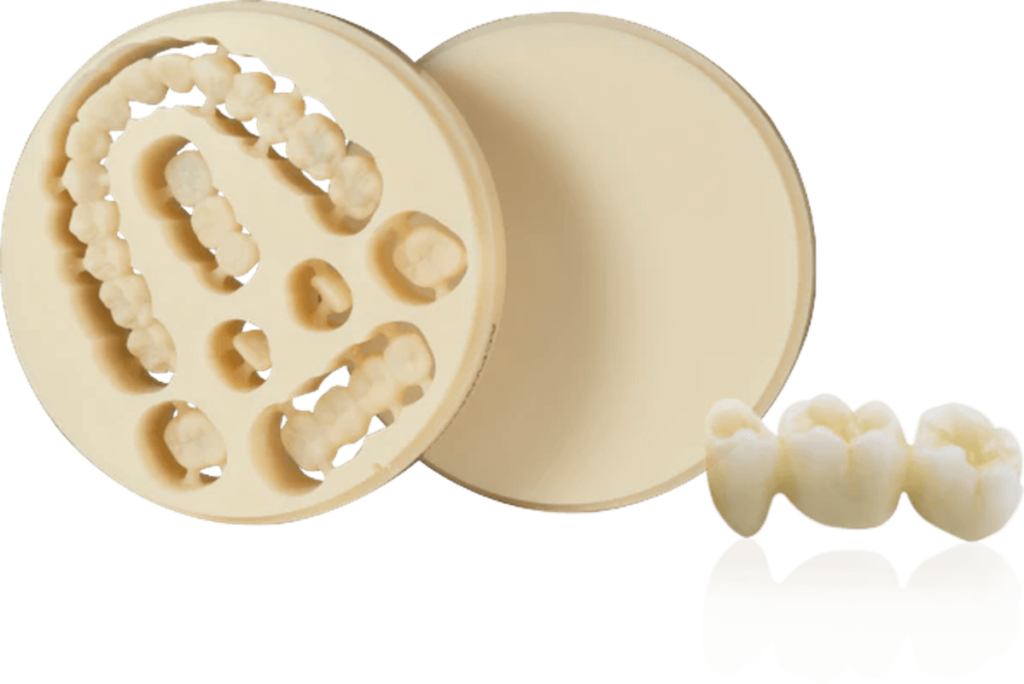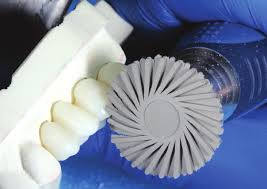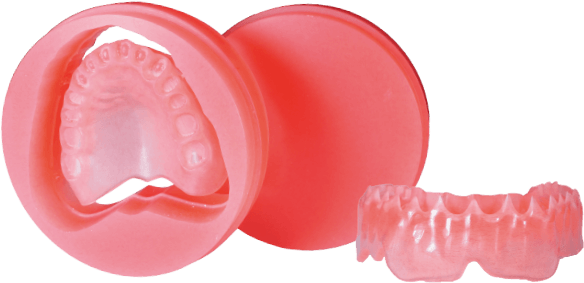Monochromatic PMMA for dental labs is one standout material in rapidly evolving dental technology. Monochromatic PMMA for tooth restorations is known for its aesthetics, biocompatibility, and versatility. It is a game changer in the world of dental procedures and dental restorations.
The article below is focused on describing how to use monochromatic PMMA for tooth restorations. We will guide you on the common monochromatic PMMA application and using monochromatic PMMA for tooth restoration. Also, we will introduce you to the one of best dental monochromatic PMMA manufacturers i.e Aidite.
Let’s start the article and understand more about monochromatic PMMA application and how to use monochromatic PMMA for dental labs.

What is Dental Monochromatic PMMA?
The monochromatic PMMA for dental labs such as Aidite’s PMMA material is a high-quality polymer used in dental restorative procedures because of its reliability and unmatched quality. It offers a reliable solution for crafting dental restorations due to its superior properties and single-tone color characteristics. As a durable, aesthetic, and matching material, it’s a preferred choice of professionals who aim for natural-looking and precise results. It is crucial to understand how to use Monochromatic PMMA for dental restorations to maximize its benefits. Aidite PMMA offers you superior results, with ease of use, reliability, and precision.
How To Use Monochromatic PMMA For Tooth Restorations:
You can learn how to use monochromatic PMMA for dental labs by understanding and following some basic steps. The process of how to use monochromatic PMMA for tooth restoration is divided into three phases. Each phase has some basic practices to consider during monochromatic PMMA application.
Pre-Treatment Phase:
1. Material and Patient Preparation:
When preparing for any dental procedure, firstly you have to inspect the monochromatic PMMA for dental labs in good and useable condition. Once the material is prepared, the next step is to prepare the patient for the procedure by defining the results and communicating about the whole procedure.
2. Designing the Restoration:
In the next step during the pre-treatment phase, you have to design the restoration with the help of CAD or CAM technology. The systems offer accurate measurement and design that enables the final restoration to perfectly fit and meet aesthetic requirements.
3. Calibration with Machines:
In this step of how to use monochromatic PMMA for restorations, you need to calibrate PMMA material with milling machines. Proper measurement and calibration ensure a smooth process and reduce errors.
During Treatment Phase:
The steps of monochromatic PMMA application during treatment phase are described below for your understanding.
1. Milling the Material:
The process of transforming the PMMA material into required shapes and design is called milling. You can use different milling machines to achieve accurate and detailed results.
2. Polishing and Finishing of Restoration:
This step of how to use monochromatic PMMA for dental labs includes polishing and finishing the surface. You have to smooth the sharp edges and glossy surface to improve the durability and overall quality.

3. Trial Fitting of Restoration:
Once the restoration or crown is prepared, you need to conduct a trial fitting to examine its comfort and fitting. In this step, you can mark any required adjustments and reshape the restoration for perfect alignment with the patient’s dental anatomy.
4. Coloring of the Restoration:
After you have prepared the final restoration, the next step is to color it according to the color of the patient’s natural teeth. A perfectly matching shade of restoration enables you to achieve a natural and seamless appearance.
Post-Treatment Phase of How To Use Monochromatic PMMA for Restorations:
The necessary steps of monochromatic PMMA application for effective dental restorations are listed below in detail.
1. Final Adjustment:
After the trial fitting, you have to make a final adjustment in the restoration for perfect fitting. This ensures optimal functionality and increased comfort for the patient during long wearing.
2. Placement and Bonding of Restoration:
Bonding and placement are the last steps in how to use monochromatic PMMA for restorations. Now your restoration is prepared, and you can place it with the help of bonding material. It is vital to use high-quality adhesive and bonding material for extra and long-lasting durability.
3. Instructions and Follow-up Schedule For the Patient:
As a professional, you have to provide the patients with necessary care instructions after completion of the procedure. Describe the importance of oral hygiene and caring for the newly planted restoration. Also, make sure to give the patient a follow-up schedule for examination and any issues.
What are Common Monochromatic PMMA Applications:
Monochromatic PMMA for dental labs is a versatile material used for dentistry and procedures. The reason behind this wide use is its physical properties and uniform color. Some of the most common monochromatic PMMA applications are described below.
1. Dental Bridges and Crafting Crowns:
Temporary and long-term bridges and crowns are crafted with dental monochromatic PMMA for tooth restorations. Your dental restorations look more natural and original with their natural appearance and high biocompatibility.
2. Provisional Restorations:
Inlays, on lays, and veneers are often created with monochromatic PMMA applications. The PMMA material offers long-lasting durability and effective matching with the natural teeth as compared to any other material.
3. Implants and Supported Restorations:
Most dentists use monochromatic PMMA for tooth restorations for temporary restorations during the original prosthetics are not prepared. The aesthetic consistency and lightweight nature of the material make it suitable for patients waiting for their final implants.
4. Orthodontic Devices:
Another monochromatic PMMA application is for orthodontic appliances like bite guards and retainers because of its transparency, safety of oral use, and flexibility.
5. Creating Dental Mock-up and Models:
The monochromatic PMMA for dental labs is also used for creating dental mock-ups and precise models with CAD/CAM systems.
6. Dentures:
The material offers high comfort, and aesthetic appeal when used in denture bases. It is one of the most commonly used materials for dentures because of its customization and polishing abilities.

7. Crafting Demonstrations Models and Training:
One of the most basic and common Monochromatic PMMA applications is for demonstration models and training by professionals and Aidite Dental schools. This helps the professional to understand different procedures and practice restoring techniques.
Tips For How To Use Monochromatic PMMA for Dental Labs:
Some of the expert tips on monochromatic PMMA application are described below for you to understand how to use monochromatic PMMA for restorations properly.
- Always select the suitable material and matching shade
- Properly moisturize the restoration to prevent cracking and distortion during the process
- Use a fine polishing bur or disc for a smooth finish
- Store the material in a suitable place to prevent premature curing
- Properly clean your tools to avoid material build-up and contamination
- Test and make any necessary adjustments before the final curing
FAQs:
1. What are the three basic monochromatic PMMA applications?
The most basic uses of monochromatic PMMA for dental labs are for creating veneers, crowns, and dentures.
2. What is important to ensure natural and aesthetic appearance?
Polishing and matching the color shade with the color of natural teeth is important to ensure aesthetic and natural appearance.
3. Why monochromatic PMMA for tooth restorations is best for dental procedures?
The characteristics like durability, customization and natural appearance make the monochromatic PMMA for tooth restoration the best material.
4. What are some common tips for how to use monochromatic PMMA for restorations?
Make sure to prepare the restoration with moisturized control and perfect ratio to maintain a natural appearance and look.
Conclusion:
The dental monochromatic PMMA application is a marvel of modern technology and advancement in the dental industry. The monochromatic PMMA for dental labs is a high-quality polymer material used for crafting veneers, crowns, and bridges. The Aidite monochromatic PMMA for tooth restoration is a perfect solution for your dental procedure. The material is manufactured under strict quality control to ensure long-lasting durability. You can follow the above-mentioned steps on how to use monochromatic PMMA for crowns to achieve the best results.



